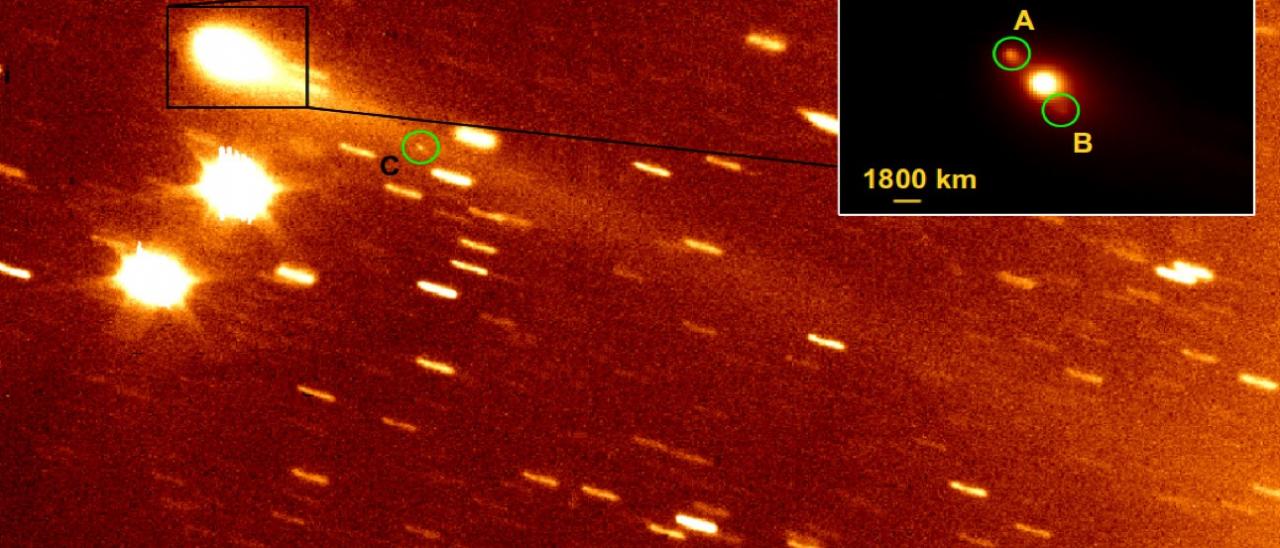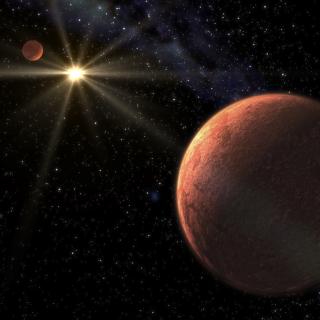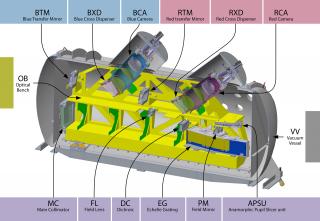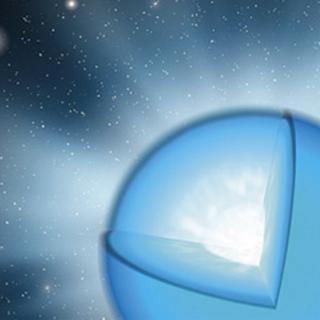Subvenciones relacionadas:
General
Este Proyecto estudia las propiedades físicas y composicionales de los llamados pequeños cuerpos del Sistema Solar, que incluyen asteroides, objetos helados y cometas. Entre los grupos de mayor interés destacan los objetos trans-neptunianos (TNOs), incluyendo los objetos más lejanos detectados hasta la fecha (Extreme-TNOs o ETNOs); los cometas, y los objetos transicionales cometa-asteroide (Centauros y los llamados Main Belt Comets - MBCs); los asteroides primitivos. Los dos últimos grupos contienen el material más primordial y prístino del Sistema Solar son claves para comprender su origen y evolución. Se destacan entre los asteroides aquellos que se acercan a la órbita de la Tierra (near-Earth asteroids o NEAs), así como los considerados potencialmente peligrosos (Potentially Hazardous Asteroids o PHAs). Debido a su cercanía, los NEAs son los objetos más accesibles al estudio in-situ con misiones espaciales y su futura explotación como fuente de materias primas (asteroid mining). Se destaca el liderazgo por parte del IP del grupo de un survey espectroscópico (visible e infrarrojo cercano) de asteroids primitivos (PRIMitive Asteroid Spectroscopic Survey - PRIMASS). Este proyecto ha recibido financiación de la NASA (17-PDART17_2-0097, IP: N. Pinilla-Alonso, 137.000€ - 2 años) para archivar todos estos espectros (más de 800) en el Small Bodies Node del NASA Planetary Data System.
Los estudios de composición superficial y propiedades físicas y térmicas de estos cuerpos se llevan a cabo utilizando espectroscopia en un amplio rango de longitudes de onda (desde 0.35 a 24 micras), así como imagen y fotometría en el mismo rango. Los datos se interpretan utilizando modelos de scattering y termo-físicos. El proyecto trabaja además en el análisis de las propiedades físicas de los núcleos cometarios y de las propiedades del polvo y el gas en las comas cometarias, muy especialmente en el estudio del polvo en las colas de los MBCs y de los mecanismos por los cuales se emite.
Este grupo mantiene diversas colaboraciones internacionales con otros grupos entre las que podemos destacar: (1) la pertenencia al Grupo de Ciencia de la misión de NASA OSIRIS-REx, en concreto al "Image Processing Working Group", en donde se encarga del tratamiento de los mapas de color que se están obteniendo actualmente con las cámaras OCAMS; (2) la pertenencia al núcleo central de proponentes de las misiones M5 de ESA CASTALIA, CASTAway y Hera; (3) la coordinación de un grupo internacional de estudio de NEAs llamado EURONEAR (European Near Earth Asteroid Research); (4) la pertenencia al "Center for Lunar and Asteroid Surface Science" (CLASS, NASA); (5) la integración en el grupo de Sistema Solar de la misión Euclid; (6) la participación activa en los surveys J-PLUS y J-PASS, en los que trabaja en la explotación de las observaciones de objetos del Sistema Solar; (7) la pertenencia a los grupos de trabajo de Sistema Solar de los telescopios Gaia y JWST.
Miembros
Actividad científica
Publicaciones relacionadas
-
Noble gases and nitrogen in samples of asteroid Ryugu record its volatile sources and recent surface evolutionThe near-Earth carbonaceous asteroid (162173) Ryugu is expected to contain volatile chemical species that could provide information on the origin of Earth’s volatiles. Samples of Ryugu were retrieved by the Hayabusa2 spacecraft. We measured noble gas and nitrogen isotopes in Ryugu samples and found that they are dominated by presolar and primordialOkazaki, Ryuji et al.
Fecha de publicación:
32023 -
Soluble organic molecules in samples of the carbonaceous asteroid (162173) RyuguThe Hayabusa2 spacecraft collected samples from the surface of the carbonaceous near-Earth asteroid (162173) Ryugu and brought them to Earth. The samples were expected to contain organic molecules, which record processes that occurred in the early Solar System. We analyzed organic molecules extracted from the Ryugu surface samples. We identified aNaraoka, Hiroshi et al.
Fecha de publicación:
32023 -
Macromolecular organic matter in samples of the asteroid (162173) RyuguSamples of the carbonaceous asteroid (162173) Ryugu were collected and brought to Earth by the Hayabusa2 spacecraft. We investigated the macromolecular organic matter in Ryugu samples and found that it contains aromatic and aliphatic carbon, ketone, and carboxyl functional groups. The spectroscopic features of the organic matter are consistent withYabuta, Hikaru et al.
Fecha de publicación:
02023 -
Near to Mid-infrared Spectroscopy of (65803) Didymos as Observed by JWST: Characterization Observations Supporting the Double Asteroid Redirection TestThe Didymos binary asteroid was the target of the Double Asteroid Redirection Test (DART) mission, which intentionally impacted Dimorphos, the smaller member of the binary system. We used the Near-Infrared Spectrograph and Mid-Infrared Instrument instruments on JWST to measure the 0.6-5 and 5-20 μm spectra of Didymos approximately two months afterRivkin, Andrew S. et al.
Fecha de publicación:
112023 -
Scaling slowly rotating asteroids with stellar occultationsContext. As evidenced by recent survey results, the majority of asteroids are slow rotators (spin periods longer than 12 h), but lack spin and shape models because of selection bias. This bias is skewing our overall understanding of the spins, shapes, and sizes of asteroids, as well as of their other properties. Also, diameter determinations forMarciniak, A. et al.
Fecha de publicación:
112023 -
The Second International Asteroid Warning Network Timing Campaign: 2005 LW3The Earth close approach of near-Earth asteroid 2005 LW3 on 2022 November 23 represented a good opportunity for a second observing campaign to test the timing accuracy of astrometric observation. With 82 participating stations, the International Asteroid Warning Network collected 1046 observations of 2005 LW3 around the time of the close approachFarnocchia, Davide et al.
Fecha de publicación:
112023 -
A review of planetary systems around HD 99492, HD 147379, and HD 190007 with HARPS-NContext. The Rocky Planet Search (RPS) program is dedicated to a blind radial velocity (RV) search of planets around bright stars in the northern hemisphere, using the high-resolution echelle spectrograph HARPS-N installed on the Telescopio Nazionale Galileo (TNG). Aims: The goal of this work is to revise and update the properties of threeStalport, M. et al.
Fecha de publicación:
102023 -
The GAPS programme at TNG. XLVI. Deep search for low-mass planets in late-dwarf systems hosting cold JupitersContext. With the growth of comparative exoplanetology, it is increasingly clear that the relationship between inner and outer planets plays a key role in unveiling the mechanisms governing formation and evolution models. For this reason, it is important to probe the inner region of systems hosting long-period giants in search of undetected lowerPinamonti, M. et al.
Fecha de publicación:
92023 -
Heliocentric distance dependence of zodiacal light observed by Hayabusa2#Zodiacal light (ZL) is sunlight scattered by interplanetary dust particles (IDPs) at optical wavelengths. The spatial distribution of IDPs in the Solar System may hold an important key to understanding the evolution of the Solar System and material transportation within it. The number density of IDPs can be expressed as n (r ) ∼r -α , and theTsumura, Kohji et al.
Fecha de publicación:
122023 -
Discovery and physical characterization as the first response to a potential asteroid collision: The case of 2023 DZ<SUB>2</SUB>Context. Near-Earth asteroids (NEAs) that may evolve into impactors deserve detailed threat assessment studies. Early physical characterization of a would-be impactor may help in optimizing impact mitigation plans. We first detected NEA 2023 DZ 2 on 27 February 2023. After that, it was found to have a minimum orbit intersection distance (MOID) withPopescu, Marcel M. et al.
Fecha de publicación:
82023 -
Characterization of the Ejecta from the NASA/DART Impact on Dimorphos: Observations and Monte Carlo ModelsThe NASA Double Asteroid Redirection Test (DART) spacecraft successfully crashed on Dimorphos, the secondary component of the binary (65803) Didymos system. Following the impact, a large dust cloud was released, and a long-lasting dust tail developed. We have extensively monitored the dust tail from the ground and the Hubble Space Telescope. WeMoreno, Fernando et al.
Fecha de publicación:
82023 -
Long-lasting activity of asteroid (248370) 2005 QN<SUB>173</SUB>We present the results of observations of asteroid (248370) QN 173 obtained during July 2021-January 2022 with three telescopes. Our analysis revealed the presence of the dust tail for about half of a year. The direct images of the asteroid were obtained with broad-band filters. No emissions were revealed in the spectra, and the spectrum of theIvanova, Oleksandra et al.
Fecha de publicación:
102023 -
Borderline hyperbolic comet C/2021 O3 (PANSTARRS) was fading as it approached the SunWe present an observational and numerical study of the borderline hyperbolic comet C/2021 O3 (PANSTARRS) performed during its recent passage through the inner Solar system. Our observations were carried out at OASI and SOAR between 2021 October and 2022 January, and reveal a low level of activity relative to which was measured for other long-periodEvangelista-Santana, M. et al.
Fecha de publicación:
92023 -
Deep K-band surface brightness photometry of dE galaxies. I. Local Volume and Virgo clusterContext. Dwarf elliptical galaxies (dEs) are the most abundant in the Universe. Research into these objects in connection with late-type dwarf galaxies is important for evaluating theories of dwarf galaxy formation and evolution. Aims: Our past studies (2000-2010) suggested a possible evolutionary link between early- and late-type dwarf galaxiesPinter, V. et al.
Fecha de publicación:
72023 -
Inflight calibration of the optical navigation camera for the extended mission phase of Hayabusa2After delivering its sample capsule to Earth, the Hayabusa2 spacecraft started its extended mission to perform a flyby of asteroid 2001 CC 21 in 2026 and rendezvous with asteroid 1998 KY 26 in 2031. During the extended mission, the optical navigation camera (ONC) of Hayabusa2 will play an important role in navigation and science observations, butYamada, Manabu et al.
Fecha de publicación:
122023 -
Physical properties of NEOs derived from their phase curvesThe observation of Near Earth objects (NEOs) allows us to study the physical properties of the smallest size bodies of our Solar System and help impose constraints on their origin and evolution. The solar phase curve is a very important tool to derive diverse physical properties of a small body so that we set up an observational campaign to deriveArcoverde, Plícida et al.
Fecha de publicación:
72023 -
Scientific CMOS Sensors in Astronomy: IMX455 and IMX411Scientific complementary metal-oxide-semiconductor (CMOS) detectors have developed quickly in recent years thanks to their low cost and high availability. They also have some advantages over charge-coupled devices (CCDs), such as high frame rate or typically lower readout noise. These sensors started to be used in astronomy following theAlarcon, Miguel R. et al.
Fecha de publicación:
52023 -
Hyades Member K2-136c: The Smallest Planet in an Open Cluster with a Precisely Measured MassK2-136 is a late-K dwarf (0.742 ± 0.039 M ⊙) in the Hyades open cluster with three known, transiting planets and an age of 650 ± 70 Myr. Analyzing K2 photometry, we found that planets K2-136b, c, and d have periods of 8.0, 17.3, and 25.6 days and radii of 1.014 ± 0.050 R ⊕, 3.00 ± 0.13 R ⊕, and 1.565 ± 0.077 R ⊕, respectively. We collected 93Mayo, Andrew W. et al.
Fecha de publicación:
62023 -
The two rings of (50000) QuaoarContext. Quaoar is a classical trans-Neptunian object (TNO) with an area-equivalent diameter of 1100 km and an orbital semi-major axis of 43.3 astronomical units. Based on stellar occultations observed between 2018 and 2021, an inhomogeneous ring (Q1R, i.e., Quaoar's first ring) has been detected around this body. Aims: A new stellar occultation byPereira, C. L. et al.
Fecha de publicación:
52023 -
Observations of two superfast rotator NEAs: 2021 NY<SUB>1</SUB> and 2022 ABIn the framework of the visible NEAs observations survey (ViNOS) that uses several telescopes at the Canary Islands observatories since 2018, we observed two superfast rotator NEAs, 2021 NY 1 and 2022 AB. We obtained photometry and spectrophotometry of both targets and visible spectroscopy of 2022 AB. Light curves of 2021 NY 1 obtained in fourLicandro, Javier et al.
Fecha de publicación:
52023
Charlas relacionadas
No se han encontrado charlas relacionadas.Congresos relacionados
No se han encontrado congresos relacionados.Noticias
-
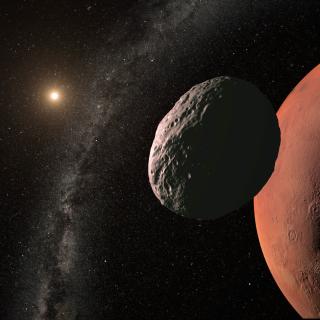 Confirman un nuevo asteroide troyano que comparte órbita con MarteFecha de publicación
Confirman un nuevo asteroide troyano que comparte órbita con MarteFecha de publicación -
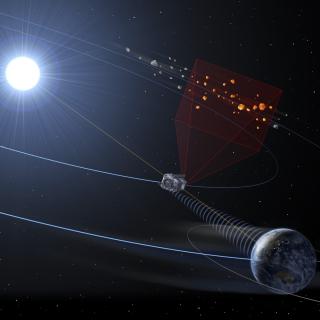 El IAC acoge la reunión de la misión NEOMIR que impulsará la detección temprana de asteroidesFecha de publicación
El IAC acoge la reunión de la misión NEOMIR que impulsará la detección temprana de asteroidesFecha de publicación -
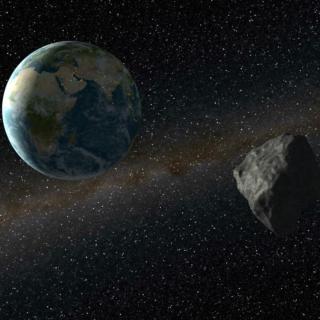 Avanzan en el conocimiento del cinturón de asteroides cercano a la Tierra, los ArjunaFecha de publicación
Avanzan en el conocimiento del cinturón de asteroides cercano a la Tierra, los ArjunaFecha de publicación
